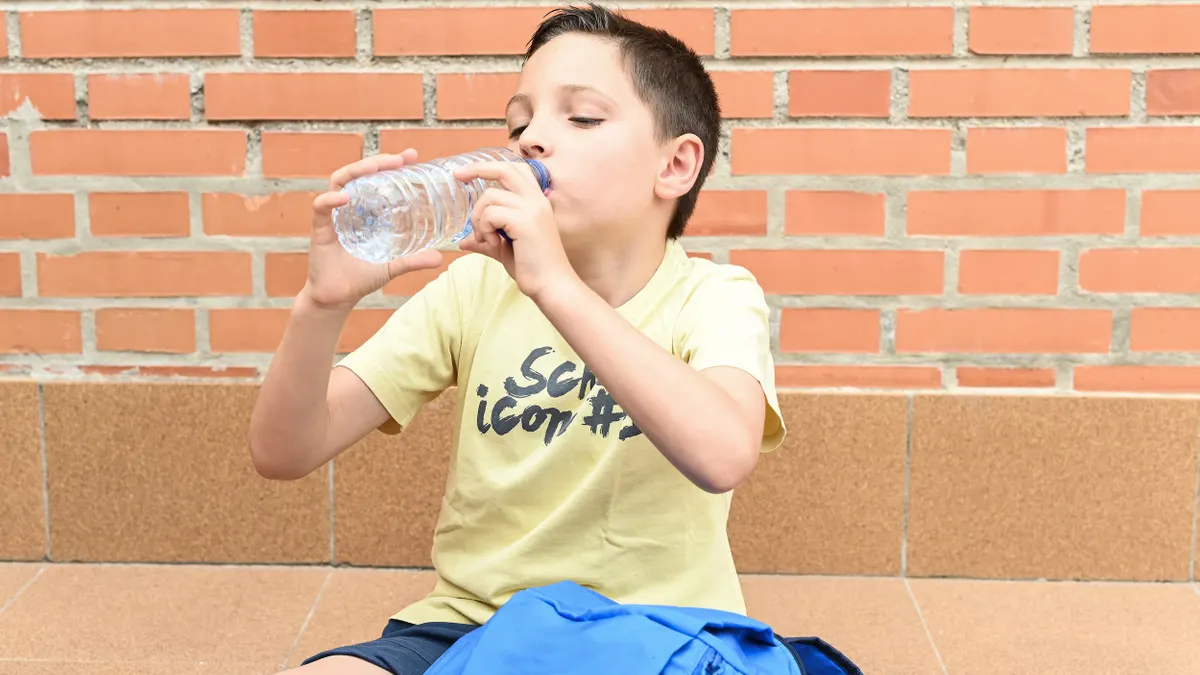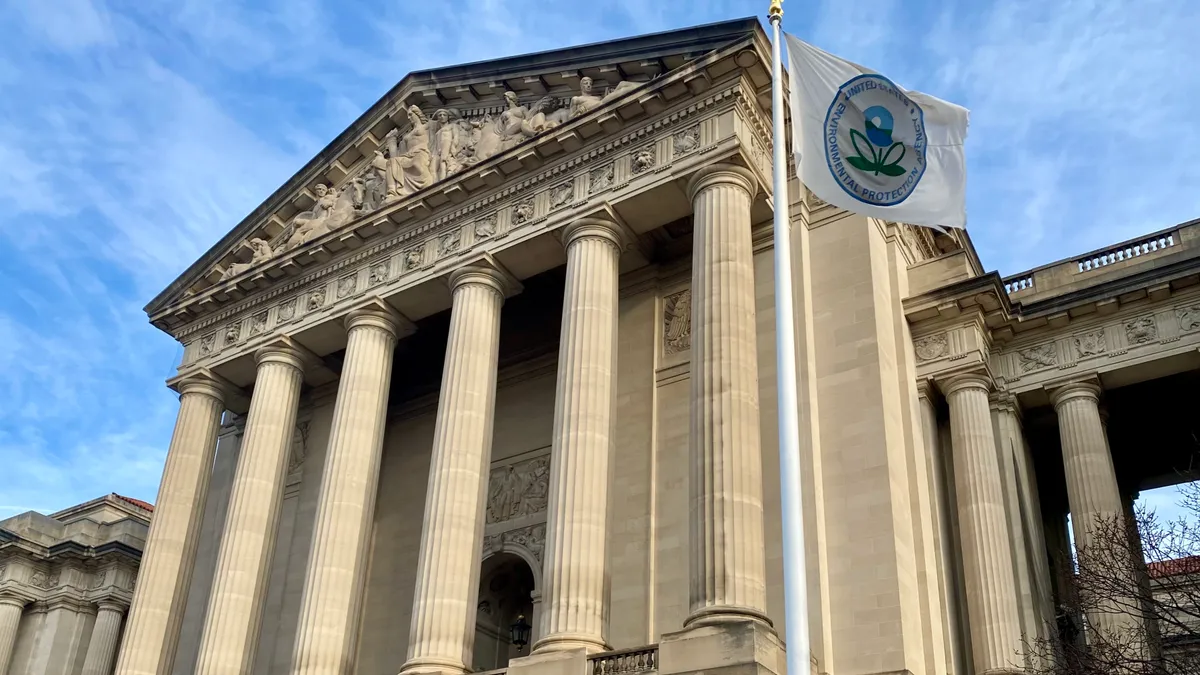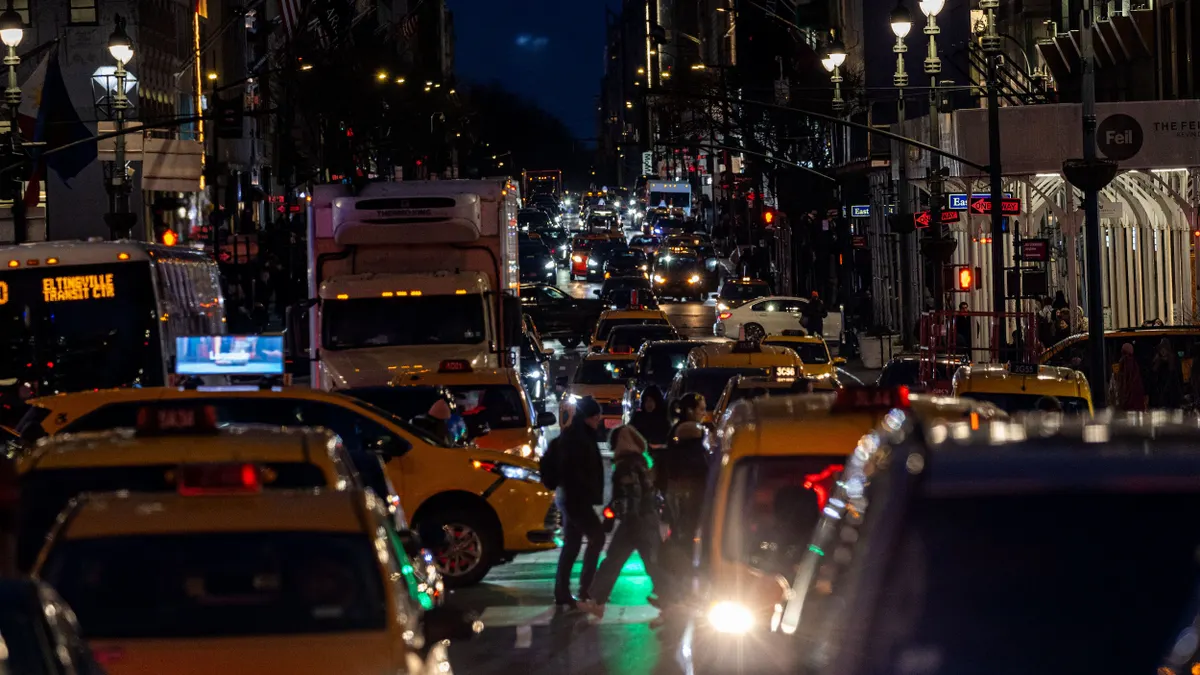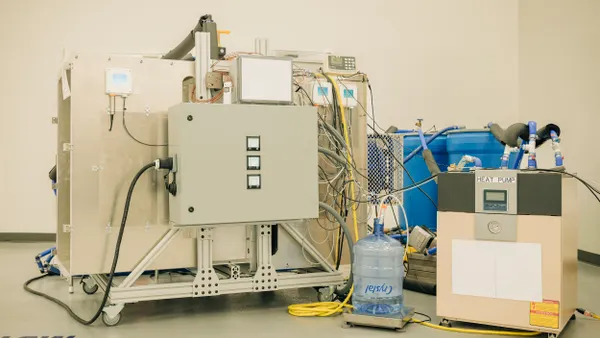Dive Brief:
-
As federal funding for protecting people from extreme heat wanes, states, cities and counties must take the lead to protect residents — especially children and other at-risk populations, Dr. John Balbus, former Health and Human Services deputy assistant secretary and current principal of Climate Care Consulting, said during an August 13 Center for American Progress webinar on state and local efforts to protect children from extreme heat.
-
Children are uniquely vulnerable to heat because their bodies are not developed enough to regulate temperatures and recover from high heat exposure, Autumn Burton, senior associate of climate, health and environment at the Federation of American Scientists, said during the webinar.
-
Earlier this year, the New York legislature passed a bill that will go into effect next month requiring schools to take action “to relieve heat-related discomfort” when the occupied space temperature reaches 82 degrees Fahrenheit and remove students and staff from occupied spaces if it reaches 88 degrees Fahrenheit.
Dive Insight:
This year is on track to be the second or third warmest year on record, according to Carbon Brief, with 2024 holding the record as the hottest.
Extreme heat events are more frequent, more intense and last longer than they have in the past, Burton said. In addition, “the scope of impact continues to grow, so communities that didn't experience extreme heat in decades and years past are now facing it, and they don't have the infrastructure and planning and protocols in place to deal with it.”
In classrooms, research shows that for every 1 degree Fahrenheit increase above the average annual temperature, learning outcomes drop by 1% proportionately, Burton said. When schools close during extreme heat events, she added, “that's measurable losses in classroom time that translates to very direct losses in overall learning.”
Extreme heat affects children’s health, behavior, sleep and stress levels, said Joan Lombardi, director of the Early Opportunities Initiative. Grassroots advocates must send a strong message that schools, Head Start programs and child care centers need resources to provide for shade, hydration, emergency planning and building renovations, including HVAC and ventilation improvements.
“We’ve got great organizations that are working on these things — the Low Income Investment Fund and many others — but they need resources to do it,” Lombardi said.
New York State Sen. James Skoufis, who first introduced Senate Bill S775 regarding maximum temperatures in school buildings and facilities several years ago, said he fought an uphill battle to get it passed. When it looked like it was going to pass, he received “frantic calls” from school superintendents and administrators across the state who opposed the bill because of the costs it would incur their districts.
“This is not a luxury,” he said. “You can't satisfactorily — really, in any way, shape or form — actually teach if it's 90, 92, 94, 96 degrees in a classroom, never mind learn.”
Skoufis urged local officials and lawmakers “to get out in the community” to understand the duress extreme heat creates for teachers and students.
“If you're not visiting a classroom, if you're not visiting a school building, if you're not visiting a childcare center in June at the end of the year, in September at the start of the year, then you're not doing your job,” he said. “You're not able to see what everyone else that you represent is living with.











